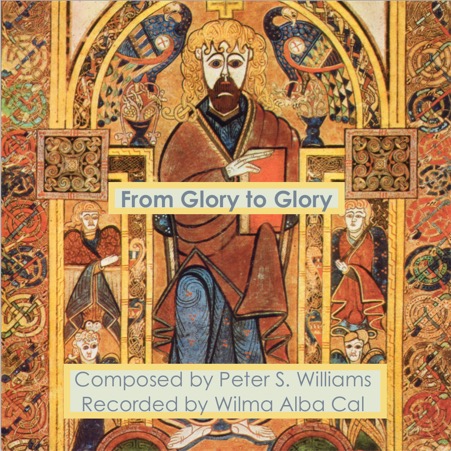From Glory to Glory is a c. 70 minute long suite of contemporary classical music for choir and instrumental ensemble, composed by English philosopher Peter S. Williams. Reflecting on the biblical story and Christian spirituality, From Glory to Glory draws upon an eclectic fusion of musical influences. The lyrics are a mixture of English, Latin, Greek, and one word of Hebrew.
The updated and expanded 2023 recording of From Glory to Glory is now available from Soundcloud (in high quality WAV format), as a YouTube Playlist of Visualizer Videos (also in WAV format) and from my podcast in mp3 format.
I compiled the computer recordings of the original 2019 iteration of From Glory to Glory (made using “Sibelius 6”) into a single mp3 “album” available from my podcast here. The original version of the suite is also available as individual tracks via Soundcloud (see above).
An Updated Recording of “From Glory to Glory” (2023)
In July 2023 it struck me that my “Sibelius 6” composing software was 13 years behind the times, and that contemporary music software would probably be able to reproduce the sound of a choir singing lyrics, rather than simply going “Ah”! Discovering that this was indeed the case, I reached out to find someone who could use my composition files to produce an updated recording of From Glory to Glory using contemporary music technology.
That person turned out to be Cuban composer Wilma Alba Cal (pictured below), whose work includes chamber, choir, orchestral and electroacoustic music (see https://wilmaalbacal.com/ & Wilma’s peopleperhour page). With degrees in composition and choral conducting, and a Diploma in Sound Creation with New Technologies from the Mexican Center for Music and Sound Arts, Wilma was a perfect fit for this project.

Over the summer of 2023, Wilma used my “Sibelius 6” files and scores to make an updated and expanded recording of From Glory to Glory that sounds more realistic than before, and where the choir sing the words on the scores! This was a collaborative process that began with Wilma gathering information on the sounds I had in mind when selecting from the instruments available in “Sibelius 6”. In response, I shared some music from formative musical influences including: Genesis (for their use of Mellatron choir), Marillion (for Pete Trewavas’s bass playing), PFM (for their use of Mellatron strings and a mini-moog synth lead) and Rick Wakeman (playing pipe organ and various moog synth solo’s). This was followed by several rounds of feedback about various pre and post-sound-mix versions of the tracks.
Wilma comments that this project challenged her “to explore the best conceived plug-ins until 2023, including voices from a choir recorded by real people programmed to sing the lyrics [and] a varied range of acoustic and electronic instruments such as the Mellotron, to iconic synthesizers from the electronic music of the 1970s such as the Minimoog. First, a careful selection of individual sounds, then the automation of each of the tracks to simulate dynamics produced by real musicians, and finally, the mixing of all of them together. I am thankful to Peter for his great availability for fluid communication during the project and for all the details he shared with me about the influences that make up the music of the From Glory to Glory Suite. It has been very pleasing to explore the sonorities he has conceived in these 70 minutes of music, which are distributed in 11 parts that combine this wide spectrum of sound.”
If you are interested in performing some or all of From Glory To Glory then do drop me a line. I can provide full and part scores, and backing tracks without the choir.
From Glory to Glory is written for: SATB Choir, Gong, Bass Drum, Tubular Bells, Glockenspiel, Vibraphone, Two Flutes, Classical Guitar, Harp, Grand Piano, Pipe Organ, Mini-Moog Synth (sample), Mellatron Choir (sample), Mellatron Strings (sample), Electronic Keyboard Pads, Cello, Electric Bass Guitar and Synth Bass (note that unavailable instruments could be substituted for by electronic keyboards).
Track 1: Trinity
Track 1, “Trinity,” depicts God’s existence prior to cosmic creation. A solo piano introduces three musical lines, the third of which is generated from the interaction of the first two, representing the way in which God the Father is the eternal root of the Divine “triad”, God the Son eternally depends upon the Father, and God the Holy Spirit eternally “proceeds” from the Father and the Son. The piece is also Trinitarian in having three sections. It ends on an unresolved chord, suggesting the eternality of the Godhead.
Track 2: Light
The angels rejoice in God’s creation of light and “dance” among the stars.
Track 3: One Sin
This movement draws upon the opening of G.K. Chesterton’s poem ‘Ecclesiastes’: “There is one sin: to call a green leaf gray, Whereat the sun in heaven shuddereth.” In other words, the fundamental sin is acting as if we were wiser than God, as if moral reality should bend to our choices and desires rather than vice versa. The consequences of sin for relationships between humans and with God is represented by the entry of the minor key and the music becoming broken up.
Track 4: Weeping Turns to Joy
Weeping Turns to Joy_Score (PDF)
This setting of words from Psalm 6:6 and 30:5 was composed in July 2021, as a short, stand-alone piece reflecting on the end of Covid 19 restrictions. In August 2023, I decided to add it into this suite, where it neatly represents the Old Testament experiences of exile (“By the rivers of Babylon we sat and wept when we remembered Zion.” – Psalm 137:1) and hope centred upon in the coming of God’s promised messiah.
Track 5: Logos
The opening of John’s gospel represents God the Son as the personification of the Stoic philosophical notion of the divine logos, or rational principle behind creation. Only, this logos reveals God in person through the incarnation.
Track 6: Love
An acapella choral setting of Jesus’ answer to a scribe’s question as to what the greatest commandment is (see Mark 12:28-34).
Track 7: Garden
As Jesus contemplates his calling to die as a sacrifice for sin, he prays in the garden of Gethsemane. The piece uses suspended resolutions and a fluctuating pattern of major and minor notes that gradually become more resolute as Jesus turns his face to the cross and prays that the Father’s will be done on earth as in heaven . . .
Track 8: Agnus Dei
The “Agnus Dei” (“Lamb of God’) is a traditional liturgical chant that contemplates the meaning of Jesus’ death on the cross in light of his subsequent resurrection from the tomb. The “Agnus Dei” is based on the saying of John the Baptist: “Behold, the Lamb of God, who takes away the sin of the world!” (John 1:29).
Track 9: Kyrie
A setting of the traditional Kyrie, a prayer for forgiveness: “Lord, forgive us, Christ forgive us, Lord forgive us.” This is the appropriate initial response to the life, death and resurrection of Jesus.
Track 10: Telos
Track 10, “Telos” (which is Greek for the goal of a process) is inspired by the apostle John’s vision of heaven in Revelation 21. The choir sing about the wedding feast of the Lamb who will wipe away ever tear from our eyes and bring “Shalom” (a Hebrew word meaning peace, wholeness and flourishing).
Track 11: Gloria
This final movement returns us to the Trinitarian theme and key of movement one, using it as a setting for the apostle Paul’s comparison between the sufferings of the present world and the glory of the new heavens and earth to come revealed by the resurrection. This movement is about living the Christian life on earth in the light of the hope of the new heavens and earth.
Musical Auto-Biography

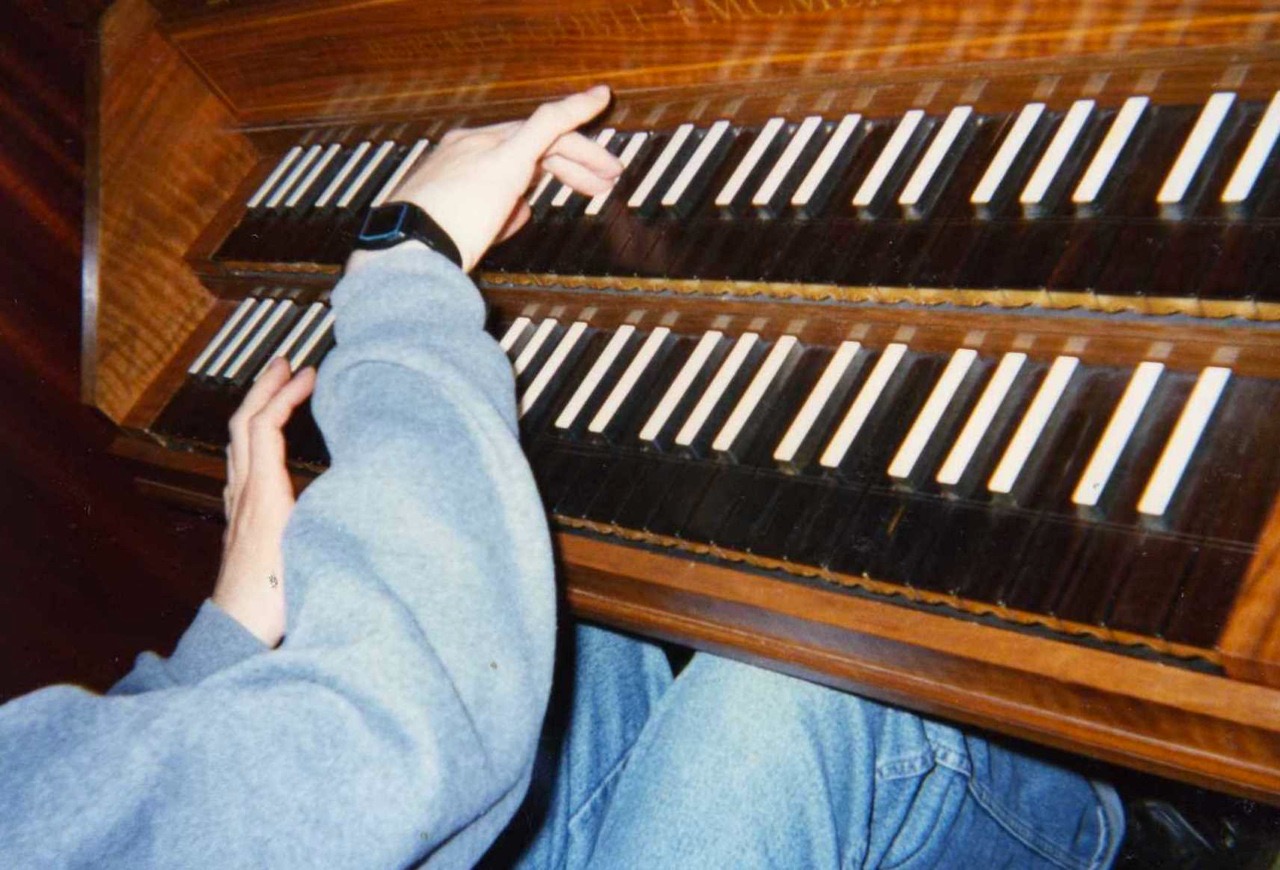
I come from a somewhat musical background. When I was a child, my mother played classical guitar. Later on, she studied piano. I had a great-aunt who taught piano, a great-uncle who played church organs (and actually had one taking up an entire room in his house), and a grandfather who played violin and taught himself to play the electronic keyboard in his retirement. Born in September 1974 (see the photo of me hitting a tin as a drum in December ’74), I developed an early and eclectic appreciation of music thanks to my parent’s vinyl record collection, which furnished my earliest musical memories. These include the tracks River of Life and Celebration from Photos of Ghosts (1973), by Italian progressive-rock group PFM (Premiata Forneria Marconi); the 1975 orchestral version of Mike Oldfield’s Tubular Bells (which paved my way to the original 1973 version of Tubular Bells); James Galway’s The Man With The Golden Flute (1976); the first album by SKY (1979); and Ralph Vaughn Williams’ Symphonia Antarctica.
In later years, I encountered additional significant musical influences in the symphonies of Russian composer Dimitri Shostakovich (1906-1975), alongside his Piano Concerto no. 2; and in the lyrical “minimalism” of Phillip Glass’ Glassworks (1982) and Solo Piano (1989). One childhood day (in a branch of the now-defunct but then high-street staple Woolworths) my father handed me a vinyl copy of A Trick of A Tail (1976) by Genesis. This album cemented my love of “prog rock”, and I went on to discover a host of other prog artists, including Pink Floyd, Iona, Marillion, Jethro Tull and Yes (See: YouTube Playlist, Prog Rock & YouTube Playlist Christian Prog Rock).
Below: Four significant albums from my youth (click for music).
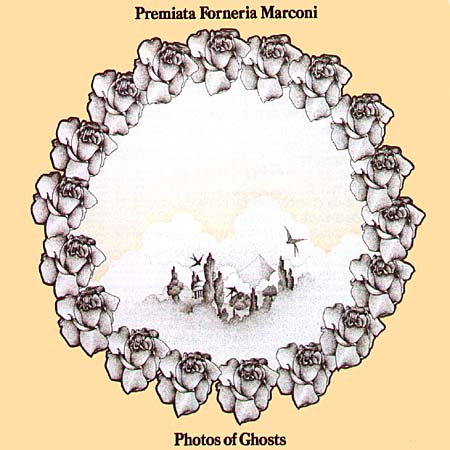
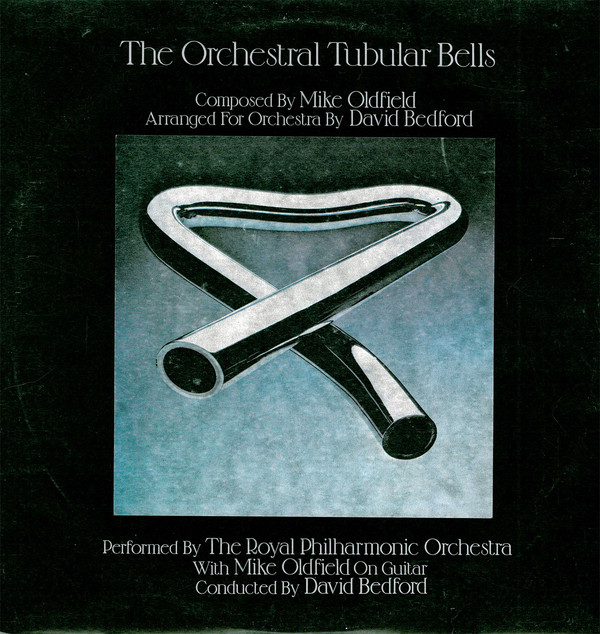
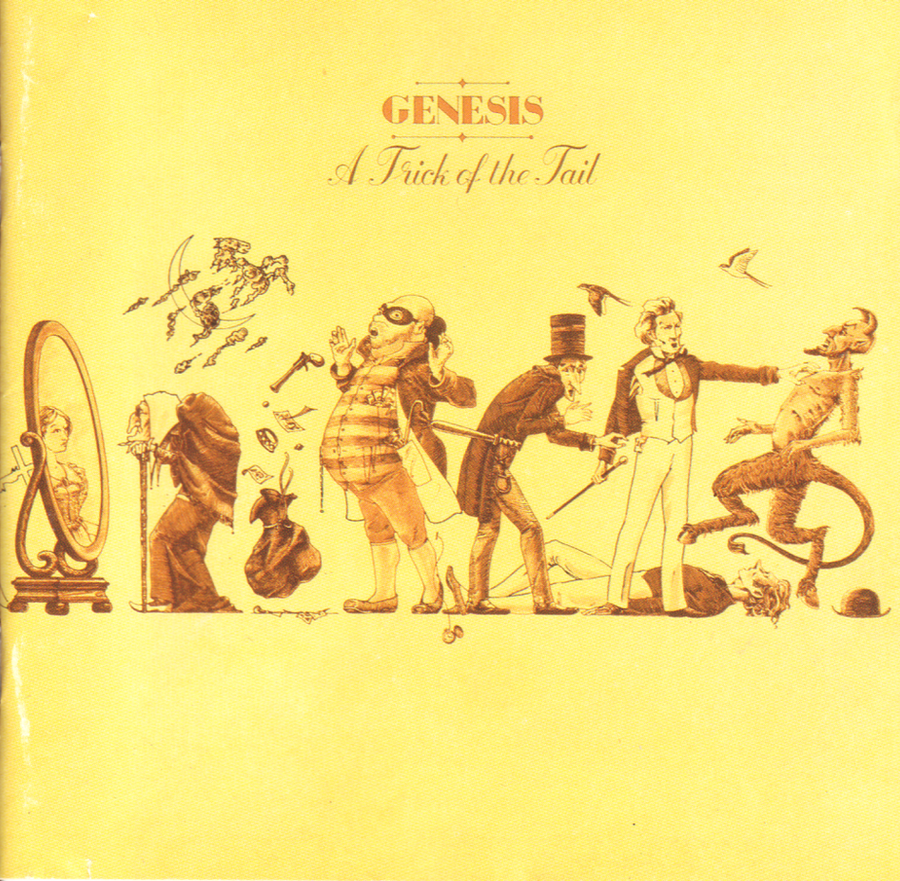
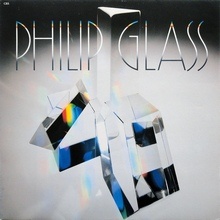
Despite this background, I came rather late to the formal study of music. I learnt to play the flute in secondary school, after they lent me one for the summer, and I studied music GCSE in my final school year. I joined the school choir, flute choir and orchestra, and began composing. Several pieces for flute choir and orchestra were performed at school concerts.
I went on to study music A-Level at Portsmouth College, where I composed music for the College drama department’s production of Shakespeare’s “The Tempest” (here’s my Tempest Overture using themes from the production score), and formed a band called Utopia (click here to listen to a taped performance of music inspired by an Ozric Tentacles riff, and covers of tracks by Led Zeppelin & Pink Floyd).
Below: Playing flute with Utopia in 1993 (with Laura on vocals, David on Piano [unfortunately out of shot!], Paul on Guitar and my flute teacher’s husband Mark on drums). Click photo for taped music from the pictured performance.
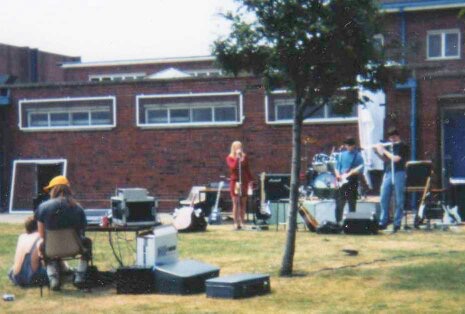
I had several compositions performed through local music competitions, including a Christmas choral piece performed at Portsmouth Guild Hall. This live recording of the original version of my Kyrie in G minor is from a competition at the end of my A levels.
Then I was accepted into Cardiff University to study a joint degree in Music and English Literature. I sang in the university chamber choir and the university choir (singing in a performance of Gustav Mahler’s monumental Symphony No. 8 in E-flat major at St. David’s Hall in Cardiff with the BBC Symphony Orchestra), and I composed music for the university drama society’s production of Shakespeare’s “Much Ado About Nothing” (played live by a sextet of musicians, including myself on flute).
Below: playing a grand piano in the music department’s main hall, and playing flute at home, in 1994:
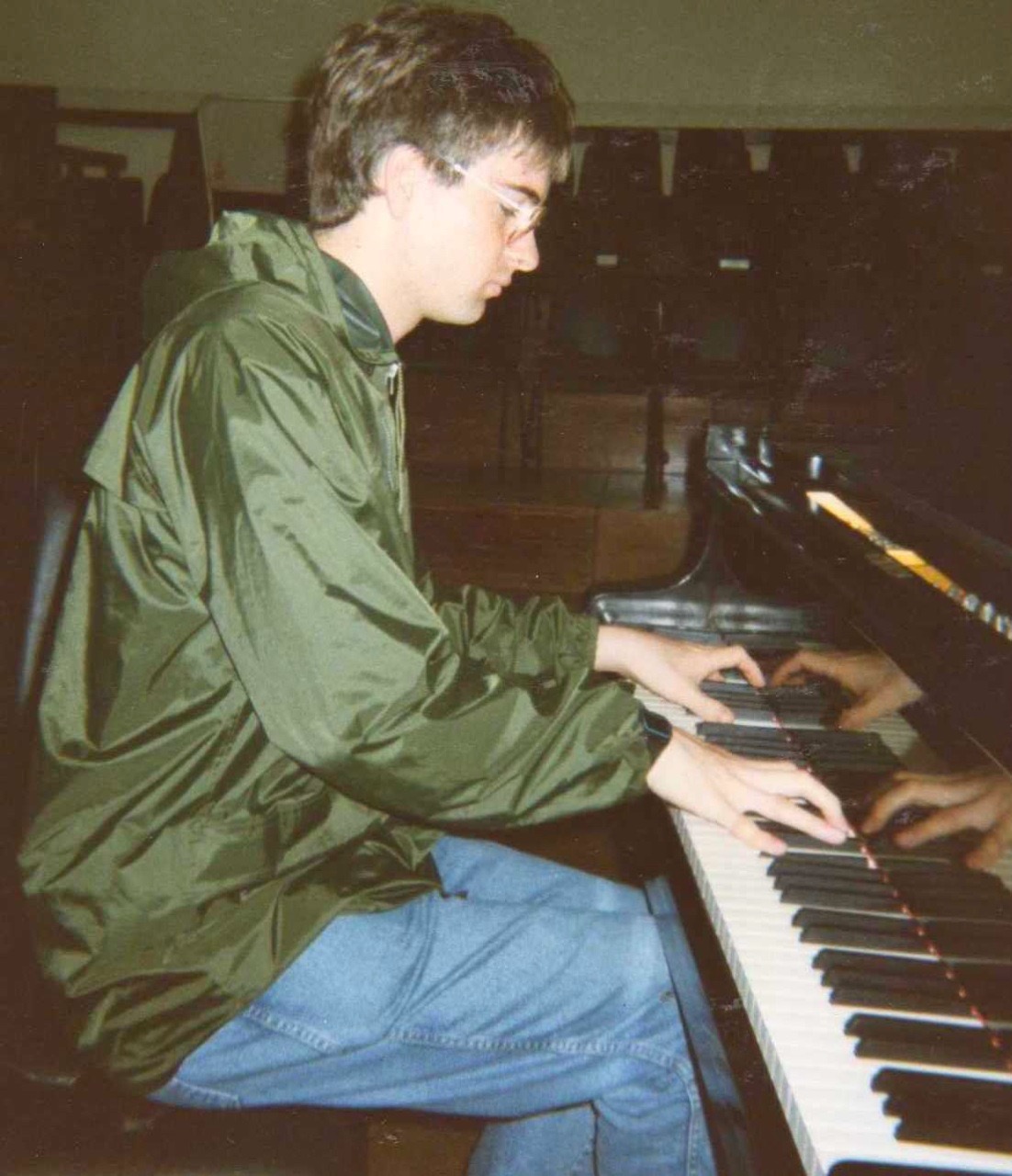
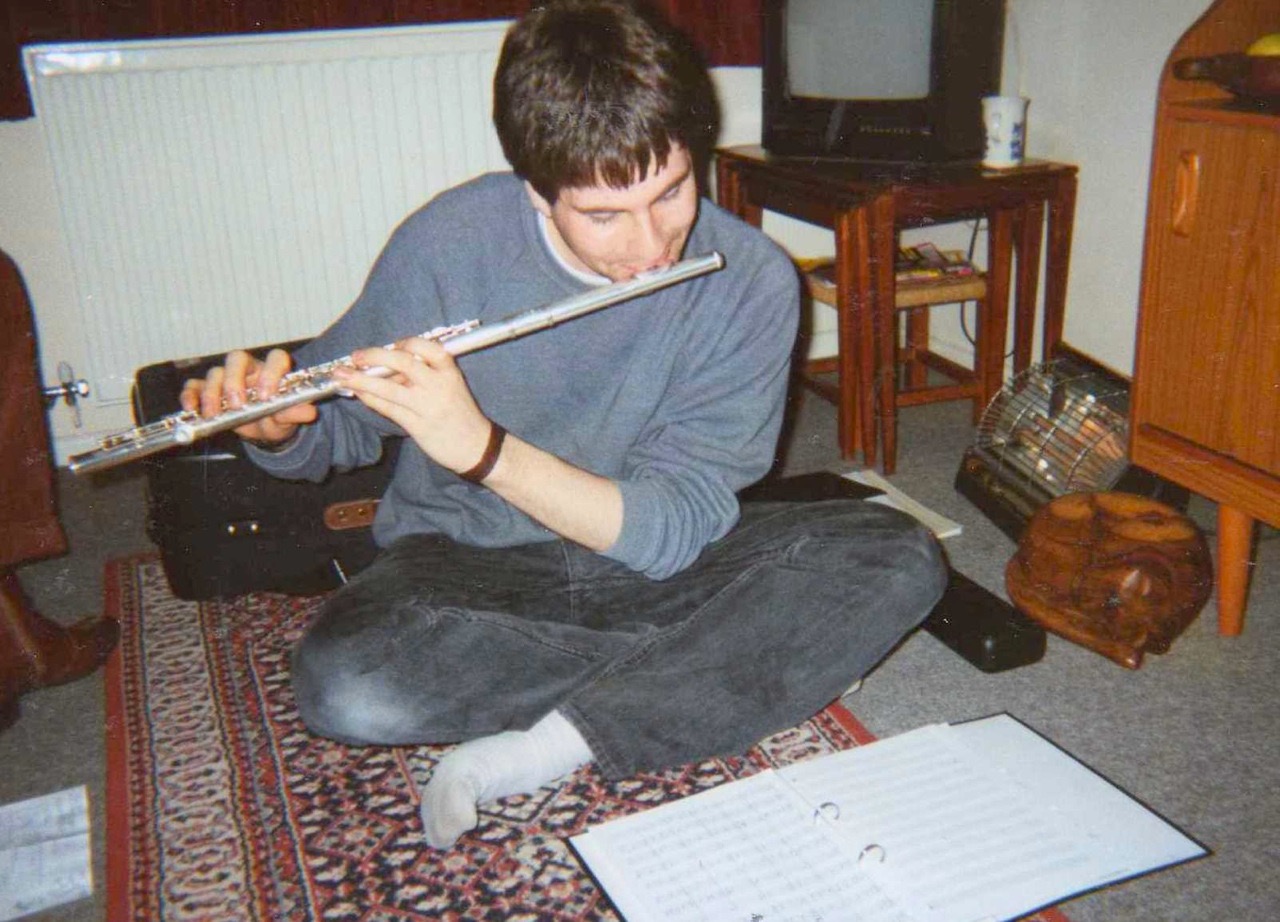
I wanted to study composition beyond the first year of the course. However, while I had obtained Grade 7 on the flute (and was working for my Grade 8), having come to music at the end of secondary school, I didn’t have grades on a second instrument. This turned out to be a requirement to proceed past the first year to study composing. In the end, for various reasons, I turned the third humanities subject I’d been studying in my first year into my degree subject, and graduated from Cardiff with a bachelors degree in philosophy.
As a Christian, I’d felt music was something I could do to the glory of God, and now I put my energy into pursuing philosophy to the glory of God. I went on the study an MA in philosophy at Sheffield University, and an MPhil at the University of East Anglia in Norwich. Now I work as a Christian philosopher and apologist, with a part-time post at the Kristiansand campus of NLA University College in Norway, where I’m an “Assistant Professor in Communication and Worldviews.”
After my university studies, I spent three years as a student pastor at an Anglican church in Leicester, where I continued to play flute in various worship groups. A year after I moved to Southampton in the summer of 2002 (to work for a Christian educational charity), I stopped playing the flute, but would join the ranks of my church’s choir on special occasions.
In 2010 my church small-group encouraged me to take up a hobby, and I decided to get back into composing. I bought a midi-keyboard and some ‘Sibelius 6’ composition software. The original version of From Glory to Glory emerged over the next three years, alongside a handful of other pieces, such as music for this trailer to a friend’s short film about King Hezekiah of Judah, and the following pieces for game apps that never saw the light of day:
More recently, I have composed music to introduce videos accompanying course modules I’ve produced for NLA University College, and I wrote “Weeping Turns to Joy” as a stand-alone piece in 2021 before giving it a home within From Glory to Glory in 2023 as I was co-producing an updated recording of the suite with Cuban composer Wilma Alba Cal (see top of page).
I hope From Glory to Glory will help people experience something of the glory of God and the beauty of Jesus. Ultimately, I think Christian art can be part of the same project of persuasively communicating the Christian faith and worldview as is my work in philosophy and apologetics, as I explain in my article “The Apologetics of Cultural Re-Enchantment in 3D: Makoto Fujimura’s Culture Care & Paul M. Gould’s Cultural Apologetics.”



